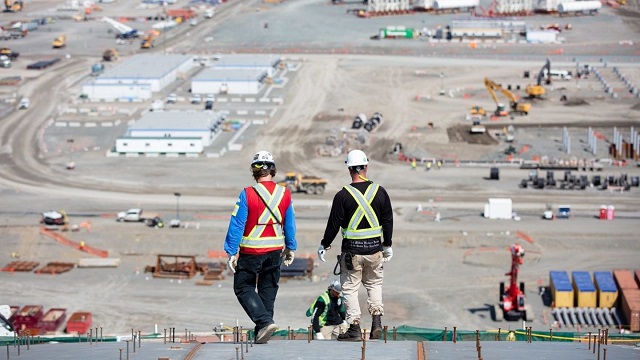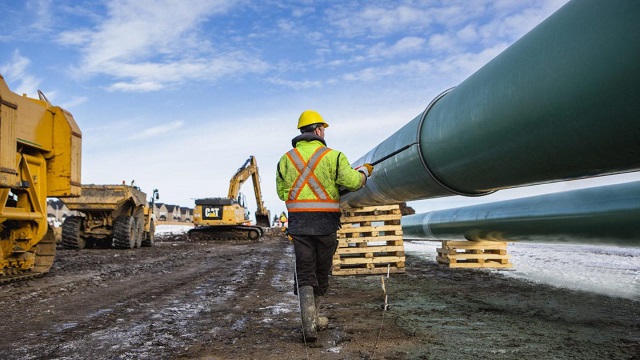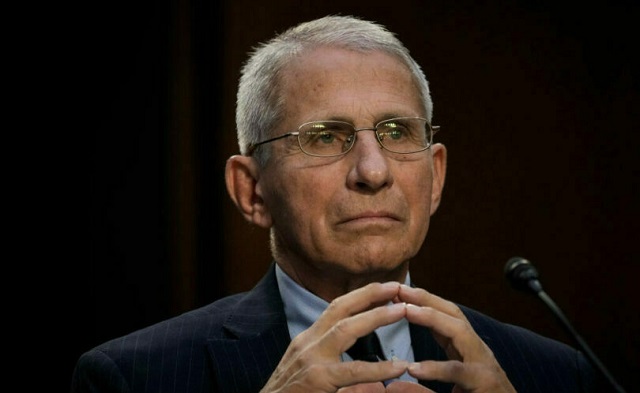Canadian Energy Centre
Indigenous trade mission to China highlights opportunity for B.C. LNG

Karen Ogen is CEO of the First Nations LNG Alliance. Photo supplied to Canadian Energy Centre
From the Canadian Energy Centre
By Will Gibson
First Nations LNG Alliance CEO Karen Ogen takes message of coastal nations to Beijing
Participating in a recent trade mission to China has strengthened Karen Ogen’s view of the opportunity for B.C. liquefied natural gas (LNG).
For the CEO of the First Nations LNG Alliance, one of 10 Indigenous business leaders in the Canada China Business Council’s trade mission to Beijing in late October, the opportunity was as obvious as the grey smog that blankets the air above China’s capital city on most days.
“So much of the problem with smog and air quality stems from using coal-fired plants to generate electricity,” says Ogen, a former elected chief and councillor of the Wet’suwet’en First Nation.
Researchers have found that switching Chinese coal plants to natural gas from Canada could reduce emissions by up to 62 per cent.
“The Chinese don’t view LNG as a fossil fuel. They see it as an important part of moving towards carbon neutrality,” Ogen says.
“There are huge opportunities for LNG in China and other Asian markets, especially for the coastal nations in British Columbia. The need is there, and the appetite is there. It’s up to us to take advantage of it.”
Ogen previously took trips to China between 2015 to 2018. The most recent trade mission was organized by the Canada China Business Council specifically for Indigenous businesses, organizations and leaders to build connections and partnerships to develop export markets and sources of investment to facilitate exports.
Ogen said the delegation gained valuable insights into new forces shaping China in the post-pandemic era, notably around using social media platforms such as TikTok as part of their marketing and e-commerce outreach to the Chinese market. But she remains struck by the appetite for LNG as a lever to lower emissions as energy demand rises.
“China produces 30 per cent of the world’s greenhouse gas emissions — it’s the world’s largest emitter and they are committed to addressing that,” Ogen says.
The U.S. Energy Information Administration projects natural gas demand in the Asia Pacific region will increase by 55 per cent in the next three decades, reaching 54 trillion cubic feet in 2050.
Canada can make a meaningful difference in helping reduce emissions by supplying Asian markets with LNG, she says.
“Converting coal-fired plants in China to LNG produced in Canada would make a bigger impact on greenhouse gas emissions than anything we do in Canada,” Ogen says.
“Canada needs to think globally when it comes to climate change.”
The United States already has seen this opportunity and is addressing it by aggressively expanding LNG exports. Already one of the world’s largest LNG exporters, there are five new LNG projects being built in the U.S.
Canada’s first LNG project is under construction with first exports targeted by 2025. Two Indigenous communities on the B.C. coast are advancing their own proposed terminals, Cedar LNG and Ksi Lisims LNG.
Ogen doesn’t want to see Canada or B.C.’s coastal First Nations shut out of the opportunities she saw on the trade mission.
“The message we received from China’s officials was very clear. They are prepared to do business with Canada and Canada’s Indigenous business community. There are opportunities for investment,” she says.
“But we need governments to work with us to realize those opportunities. If we pursue them seriously, there are real economic benefits for Canada and First Nations.”
And the five-day trade mission has convinced Ogen about the need to address the barriers for Canadian LNG.
“We have a real opportunity to help address climate change while benefiting First Nations,” she says. “It makes too much sense for us not to fight for this.”
Canadian Energy Centre
What’s next? With major projects wrapping up, what does Canada’s energy future hold

From the Canadian Energy Centre
By Mario Toneguzzi‘This is the first time Canada will enter the global marketplace as a global player, so it is an incredibly important change for the industry’
With the recent completions of the Trans Mountain expansion and Coastal GasLink pipelines, and the looming completion of LNG Canada within the next year, there are few major energy projects with the green light for one of the world’s largest and most responsible energy producers.
Which leaves a lingering question: In a world that has put a premium on energy security, what’s next for Canada?
Heather Exner-Pirot, a senior fellow and director of the natural resources, energy and environment program at the Macdonald-Laurier Institute, said Natural Resources Canada’s major projects inventory “has been in a pretty sharp decline since 2015, which is concerning.”
“It’s not just oil and gas but also mining, also electricity . . . It’s the overall context for investment in Canada,” said Exner-Pirot, who is also a special adviser to the Business Council of Canada.
“When we look at BC, we see TMX, Coastal GasLink, very soon LNG Canada will be finishing up. That’s probably in the order of $100 billion of investment that that province will lose.
“So you do start to think about what happens next. But there are some things on the horizon. I think that’s part of it. Other LNG projects where maybe it wasn’t politically popular, it wasn’t a social license, and maybe the labour force was also constrained, and now is opening opportunities.”
A recent analysis conducted by Exner-Pirot found that between 2015 and 2023, the number of energy and natural resource major projects completed in Canada dropped by 37 per cent. And those that managed to be completed often faced significant delays and cost overruns.
One notable project Exner-Pirot expects to fill the void is Ksi Lisims LNG, which is being developed on the northwest coast of Canada to export low-carbon LNG to markets in Asia. The project represents a unique alliance between the Nisga’a Nation, Rockies LNG and Western LNG.
Ksi Lisims LNG is a proposed floating LNG export facility located on a site owned by the Nisga’a Nation near the community of Gingolx in British Columbia.
The project will have capacity to produce 12 million tonnes of LNG per year, destined for markets in the Pacific basin, primarily in Asia where demand for cleaner fuels to replace coal continues to grow.
 Rendering of the proposed Ksi Lisims floating LNG project. Image courtesy Ksi Lisims LNG
Rendering of the proposed Ksi Lisims floating LNG project. Image courtesy Ksi Lisims LNG
As well, the second phase of the LNG Canada export terminal in Kitimat, B.C. shows increasing signs of moving forward, which would roughly double its annual production capacity from 14 million tonnes to 26 million tonnes, Exner-Pirot added.
While nearby, Cedar LNG, the world’s first Indigenous-owned LNG export facility, is closing in on the finish line with all permits in place and early construction underway. When completed, the facility will produce up to three million tonnes of LNG annually, which will be able to reach customers in Asia, and beyond.
According to the International Energy Agency, the world is on track to use more oil in 2024 than last year’s record-setting mark. Demand for both oil and natural gas is projected to see gradual growth through 2050, based on the most likely global scenario.
Kevin Birn, chief analyst for Canadian oil markets at S&P Global, said despite the Trans Mountain expansion increasing Canada’s oil export capacity by 590,000 barrels per day, conversations have already begun around the need for more infrastructure to export oil from western Canada.
“The Trans Mountain pipeline, although it’s critical and adds the single largest uplift in oil capacity in one swoop, we see production continue to grow, which puts pressures on that egress system,” he said.
 Photo courtesy Trans Mountain Corporation
Photo courtesy Trans Mountain Corporation
Birn said Canada remains a major global player on the supply side, being the world’s fourth-largest producer of oil and fifth-largest producer of natural gas.
“This is a really important period for Canada. These megaprojects, they’re generational. These are a once-in-a-generation kind of thing,” Birn said.
“For Canada’s entire history of being an oil and gas producer, it’s been almost solely reliant on one single export market, which is the United States. That’s been beneficial, but it’s also caused problems for Canada in that reliance from time to time.
“This is the first time Canada will enter the global marketplace as a global player, so it is an incredibly important change for the industry.”
Exner-Pirot said Canada has the ability to become a major exporter on the energy front globally, at a time when demand is accelerating.
“We have open water from B.C. to our allies in Asia . . . It’s a straight line from Canada to its allies. This is a tremendous advantage,” she said, noting the growth of data centres and AI is expected to see demand for reliable energy soar.
“We are seeing growing electricity demand after decades of plateauing because our fridges got more energy efficient and our washers and dryers got more energy efficient. Now we’re starting to see for the first time in a long time more electricity demand even in developed countries. These are all drivers.”
Canadian Energy Centre
Trans Mountain completion shows victory of good faith Indigenous consultation

Photo courtesy Trans Mountain Corporation
From the Canadian Energy Centre
‘Now that the Trans Mountain expansion is finally completed, it will provide trans-generational benefits to First Nations involved’
While many are celebrating the completion of the Trans Mountain pipeline expansion project for its benefit of delivering better prices for Canadian energy to international markets, it’s important to reflect on how the project demonstrates successful economic reconciliation with Indigenous communities.
It’s easy to forget how we got here.
The history of Trans Mountain has been fraught with obstacles and delays that could have killed the project, but it survived. This stands in contrast to other pipelines such as Energy East and Keystone XL.
Starting in 2012, proponent Kinder Morgan Canada engaged in consultation with multiple parties – including many First Nation and Métis communities – on potential project impacts.
According to Trans Mountain, there have been 73,000 points of contact with Indigenous communities throughout Alberta and British Columbia as the expansion was developed and constructed. The new federal government owners of the pipeline committed to ongoing consultation during early construction and operations phase.
Beyond formal Indigenous engagement, the project proponent conducted numerous environmental and engineering field studies. These included studies drawing on deep Indigenous input, such as traditional ecological knowledge studies, traditional land use studies, and traditional marine land use studies.
At each stage of consultation, the proponent had to take into consideration this input, and if necessary – which occurred regularly – adjust the pipeline route or change an approach.
With such a large undertaking, Kinder Morgan and later Trans Mountain Corporation as a government entity had to maintain relationships with many Indigenous parties and make sure they got it right.
 Trans Mountain participates in a cultural ceremony with the Shxw’ōwhámél First Nation near Hope, B.C. Photograph courtesy Trans Mountain
Trans Mountain participates in a cultural ceremony with the Shxw’ōwhámél First Nation near Hope, B.C. Photograph courtesy Trans Mountain
It was the opposite of the superficial “checklist” form of consultation that companies had long been criticized for.
While most of the First Nation and Métis communities engaged in good faith with Kinder Morgan, and later the federal government, and wanted to maximize environmental protections and ensure they got the best deal for their communities, environmentalist opponents wanted to kill the project outright from the start.
After the government took over the incomplete expansion in 2018, green activists were transparent about using cost overruns as a tactic to scuttle and defeat the project. They tried to make Trans Mountain ground zero for their anti-energy divestment crusade, targeting investors.
It is an amazing testament to importance of Trans Mountain that it survived this bad faith onslaught.
In true eco-colonialist fashion, the non-Indigenous activist community did not care that the consultation process for Trans Mountain project was achieving economic reconciliation in front of their eyes. They were “fair weather friends” who supported Indigenous communities only when they opposed energy projects.
They missed the broad support for the Trans Mountain expansion. As of March 2023, the project had signed agreements with 81 Indigenous communities along the proposed route worth $657 million, and the project has created over $4.8 billion in contracts with Indigenous businesses.
Most importantly, Trans Mountain saw the maturing of Indigenous capital as Indigenous coalitions came together to seek equity stakes in the pipeline. Project Reconciliation, the Alberta-based Iron Coalition and B.C.’s Western Indigenous Pipeline Group all presented detailed proposals to assume ownership.
Although these equity proposals have not yet resulted in a sale agreement, they involved taking that important first step. Trans Mountain showed what was possible for Indigenous ownership, and now with more growth and perhaps legislative help from provincial and federal governments, an Indigenous consortium will be eventually successful when the government looks to sell the project.
If an Indigenous partner ultimately acquires an equity stake in Trans Mountain, observers close to the negotiations are convinced it will be a sizeable stake, well beyond 10 per cent. It will be a transformative venture for many First Nations involved.
Now that the Trans Mountain expansion is finally completed, it will provide trans-generational benefits to First Nations involved, including lasting work for Indigenous companies. It will also demonstrate the victory of good faith Indigenous consultation over bad faith opposition.
-

 COVID-192 days ago
COVID-192 days agoFederal court rules COVID shots don’t stop transmission of virus, sides with anti-mandate lawsuit
-

 Red Deer1 day ago
Red Deer1 day agoRed Deer Symphony Orchestra invites you to the 2024-2025 season!
-

 Crime1 day ago
Crime1 day agoFBI admits identity of Hunter Biden laptop in Delaware trial after intelligence officials denied story in 2020
-

 Agriculture5 hours ago
Agriculture5 hours agoThe Netherlands Reverses Host of Climate Policies
-

 COVID-191 day ago
COVID-191 day agoCivil liberties group demands Fauci preserve records with Big Tech for COVID collusion lawsuit
-

 Bruce Dowbiggin8 hours ago
Bruce Dowbiggin8 hours agoReverse Discrimination: The Bullying Of Caitlin Clark
-

 Addictions1 day ago
Addictions1 day ago“Safer supply” reminiscent of the OxyContin crisis, warns addiction physician
-

 DEI4 hours ago
DEI4 hours agoSchool boards need leaders who focus on education not politics

